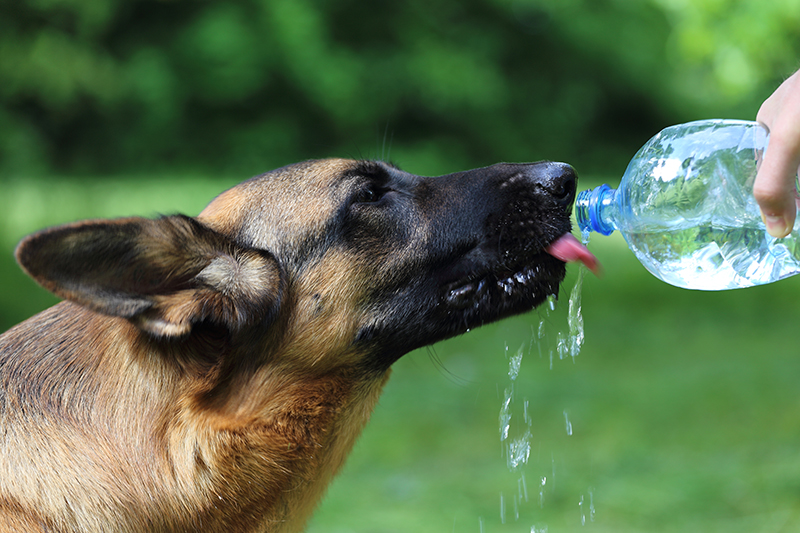
Heat stroke is a term commonly used for hyperthermia or elevated body temperature. In general, if a pet's body temperature exceeds 103°F (39.4°C), it is considered abnormal or hyperthermic. Body temperatures above 106°F (41°F) without a history of illness are most commonly associated with exposure to excessive environmental heat and are often referred to as heat stroke. The critical temperature where multiple organ failure and impending death occurs is around 107°F to 109°F (41.2°C to 42.7°C).
What causes heat stroke?
The most common cause of heat stroke or hyperthermia is leaving a dog in a car with inadequate ventilation. A dog's body temperature in this situation can rise very quickly, often within minutes.
It is important to point out that dogs cannot control their body temperature by sweating as we do, since they only have a relatively small number of sweat glands located in their footpads. Their primary way of regulating body temperature and cooling down is by panting.
Other common causes of heat stroke include being left in a outside without access to shade or water on a hot day, being exposed to a hair dryer for an extended period of time, and excessive or vigorous exercise during hot temperatures.
Dogs with a restricted airway such as the brachycephalic breeds (flat faced dogs such as pugs, boxers and bulldogs) are at a much greater risk. In these breeds, clinical signs of heat stroke can occur when the outside temperature and humidity are only moderately elevated.
Multiple seizures or severe muscle spasms can also elevate a dog's body temperature due to the increase in muscular activity.
What are the signs of heat stroke?
Clinical signs can include excessive panting, hypersalivation, listlessness, muscle tremors, vomiting, diarrhea, ataxia, collapse, loss of consciousness and seizures.
How do you treat heat stroke?
This is an immediate medical emergency. Safe, controlled reduction of body temperature is a priority. Cool water (not cold) may be poured over the head, stomach, and feet, or cool cloths may be applied to these areas. Intravenous fluids, mild sedation and oxygen are also commonly needed to treat heat stroke.
The dog's rectal temperature should be monitored and treatment discontinued once the pet shows signs of recovery or the temperature has fallen to 103ºF (39.4ºC).
What is the prognosis for heat stroke?
The prognosis depends on how high the body temperature elevated, and how long it persisted. Some pets may experience permanent organ damage or may die at a later date from complications that developed secondarily to the hyperthermia - such as liver failure, kidney failure and bleeding disorders. Heat stroke has a 50% death rate.
